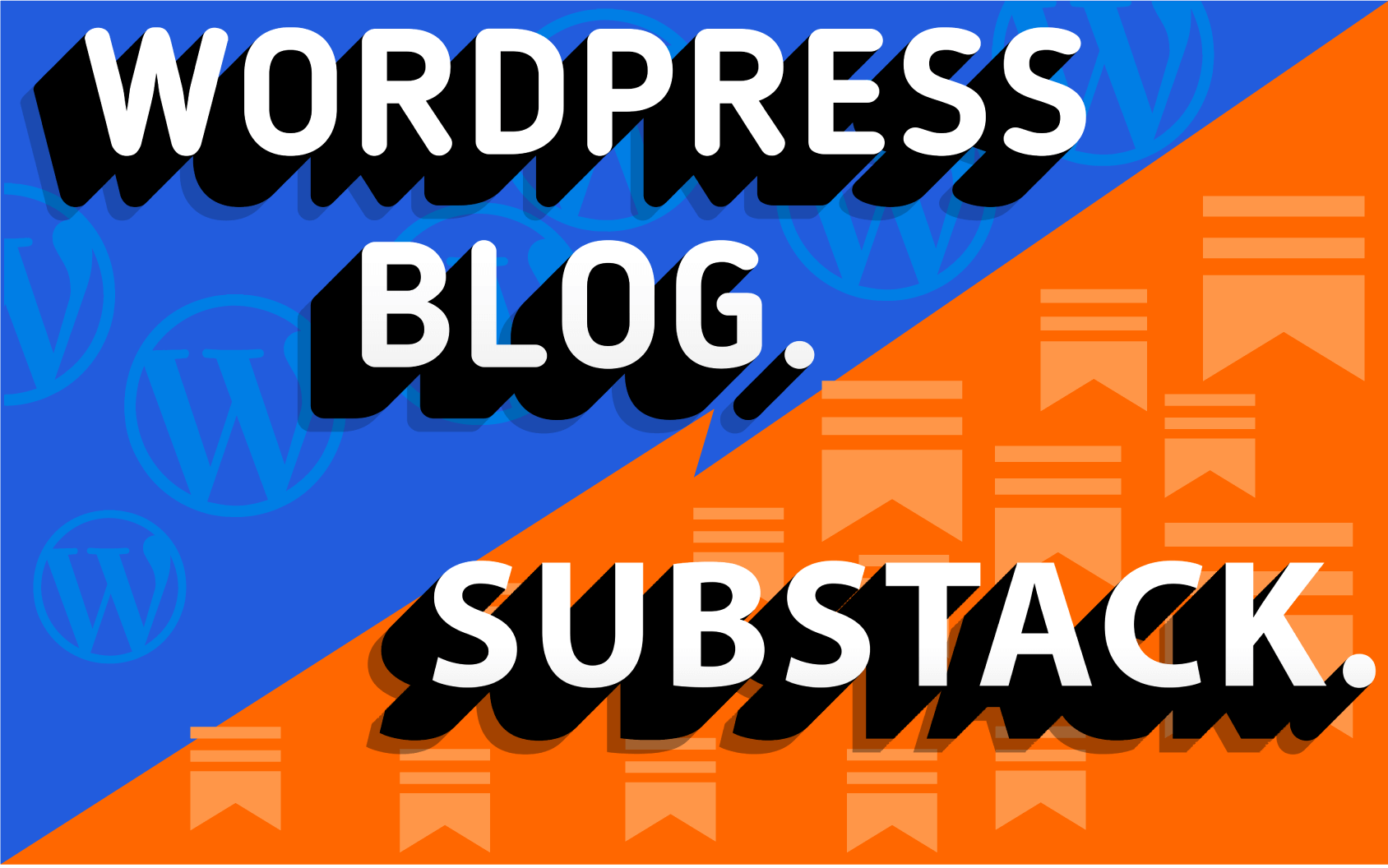WordPress Blog vs Substack – How Do They Compare?

In recent years, blogging has become a popular way for individuals and businesses to share their thoughts, ideas, and stories online. Two popular platforms for blogging are WordPress and Substack.
Let’s take a closer look at what these two platforms have to offer and learn how they compare. That way, you can choose the one that best fits your needs.
WordPress is a self-hosted platform that offers greater customization options, while Substack is a subscription-based platform that provides a simple and streamlined experience for writers who want to monetize their content easily.
WordPress blog vs Substack comparison
Here’s a brief overview of the main WordPress and Substack blog features so you can compare the two blog platforms and decide which one is a better fit for you.
| WordPress | Substack | |
| General use | Designed for blogs, business sites, online stores, etc. | Designed for newsletter publishing |
| Customization | Themes, templates, and plugins available | Templates and basic customization features available |
| Ease of use | Has a steeper learning curve | Perfect for beginners |
| Cost | Free | Subscription-based |
| Data portability | Flexible data portability options | Limited data portability options |
| Setting up | Tricky to set up hosting and domain | Easy and fast to set up |
| Scalability | Extremely scalable | Limited scalability |
General uses
First things first, WordPress and Substack don’t have the same general use. That means they’re ultimately designed for different purposes.
- WordPress can be used to create blogs, business sites, online stores, and more. This makes WordPress a popular choice for those who need a versatile platform that can be customized to their specific needs.
- Substack is specifically designed for newsletter publishing. It’s a popular choice for writers who want to build a dedicated audience and monetize their content through paid subscriptions.
What are they?
Let’s say something more about the platforms. While both are designed for publishing content, they have some unique differences.
- WordPress is a free and open-source platform that allows users to create and manage blogs. WordPress is highly customizable and flexible, making it ideal for bloggers, small businesses, and large corporations alike.
- Substack is a subscription-based platform that allows writers to create and send newsletters to subscribers, thus enabling them to grow their audience. The platform provides a simple and streamlined experience for its users.
Customization options
Different customization options allow users to make their content more unique and give it a personal touch. Not all platforms offer the same number of customization options, which is why it’s important to take this feature into account.
- WordPress users can choose from thousands of themes and templates to change the look of their WordPress blogs. They can also use plugins to insert additional functionalities to their website.
- Substack offers a more streamlined experience with limited customization options. While users can customize the look and feel of their newsletter using customizable templates, there aren’t many functionality options beyond the basic features.
Ease of use
Some platforms are easier to use than others. While the ease of use doesn’t play a big role for advanced experts, it certainly means a lot to beginners.
- WordPress is generally easy to use but has a steeper learning curve than Substack. However, once users get familiar with the platform, they can easily create and manage their content.
- Substack is primarily designed as an easy-to-use platform, even for beginners. It offers a streamlined experience with a simple and intuitive interface that allows writers to focus on creating content without worrying about technical stuff.
Costs
Cost is another crucial factor that can play an important role when choosing between WordPress and Substack.
- WordPress is a free platform, but users will need to pay for web hosting and domain registration. Additionally, users may need to purchase premium themes and plugins for advanced functionality.
- Substack is a subscription-based platform, and its pricing is based on the number of subscribers a user has. There’s a free version available, but it comes with limited features and customization options.
Data portability
At some point, you might want to move your data from one place to another. That’s when data portability becomes handy.
- WordPress is known for its flexibility and data portability. Users can easily export their content and move it around if they choose to do so.
- Substack offers limited data portability options. While users can export their subscriber data and content, there’s no easy way to migrate to another platform without losing subscriber data and content customization.
Setting up
If you’re in a hurry, you might want to go with a platform that allows you to set up your domain quickly and easily.
- WordPress requires users to set up their own hosting and domain, which can be time-consuming and require technical expertise.
- Substack is easy to set up and requires no technical expertise. Users can create an account, set up their newsletter, and start publishing content quickly and easily.
Scalability
If you’re planning to grow your business, scalability is an important feature. Scalable solutions can handle more traffic and content.
- WordPress is highly scalable and can handle large amounts of traffic and content. With the right hosting provider and optimization tools, the sky’s the limit with WordPress.
- Substack has limited scalability, and the platform is primarily designed for individual writers and small publications. While growing a large audience on Substack is possible, users should consider this limitation.
Conclusion
When talking about WordPress blog vs Substack, it’s safe to say WordPress is a better choice if you prioritize extensive customization options and scalability. Nevertheless, Substack might be a better fit if you’re looking for an easy-to-use platform.
